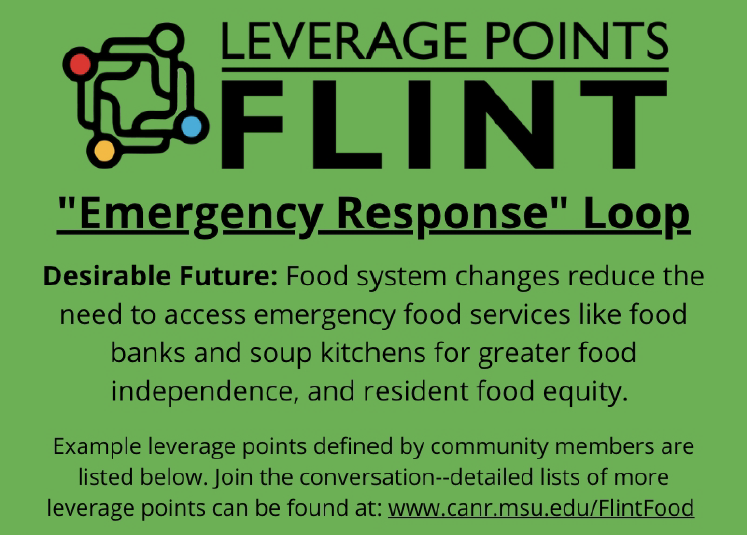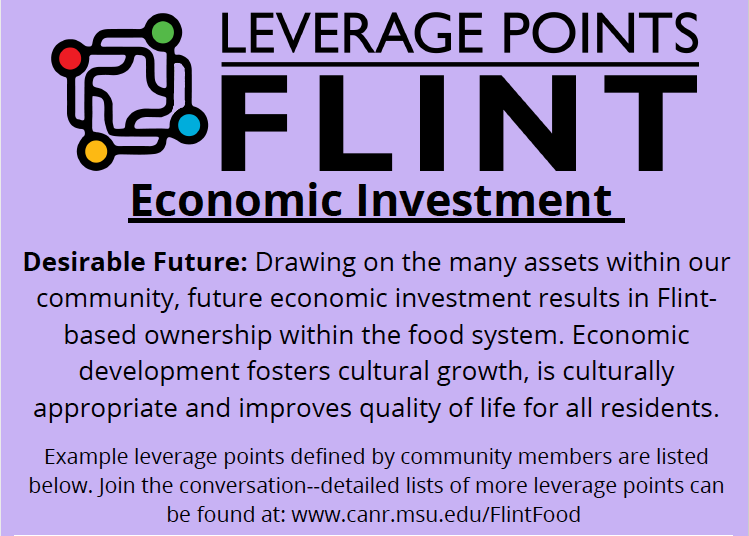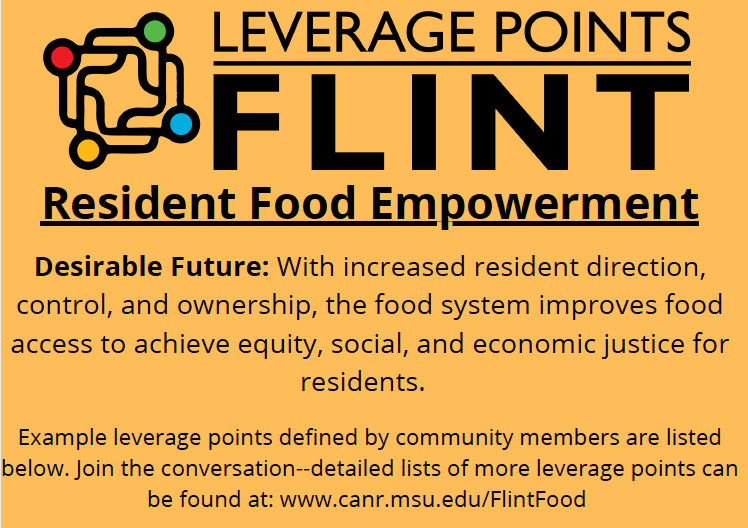Key Lessons: Synthesizing Research Results
Members of the community core team met to analyze key lessons from the research, what this means for community members, and how best to share these results. The team identified four main themes from the research results (in no particular order):
- "Emergency Response” Loop

- Community Collaborative Action
- Economic Investment

- Resident Food Empowerment

For each theme, we collectively wrote statements based on research results describing how the food system currently operates, and a desirable future for the Flint food system. We designed four community vision graphics to help illustrate these results (linked above).
The team then worked with the list of leverage points resulting from the research to identify which leverage points could help us achieve this desirable future. Leverage points are places in a system where a small intervention can lead to major changes within a system (Meadows 1999). Leverage points were sorted into three categories:
- Upstream Leverage Points: Policies, laws, or regulations that improve community conditions, creating system-wide changes.
- Midstream Leverage Points: Barriers that need to be addressed in order for the system to evolve; and/or that support individual social needs.
- Downstream Leverage Points: Addresses individual needs and crisis management.
The community vision graphics linked above highlight example leverage points associated with a desirable future. We also have a synthesis page and full list of all the leverage points from the research associated with each vision. You can access those complete lists here:
- Synthesis Leverage Points
- "Emergency Response” Loop
- Community Collaborative Action
- Economic Investment
- Resident Food Empowerment
Citation: Meadows, D. H. (1999). Leverage points: Places to intervene in a system (p. 21). The Sustainability Institute.



 Print
Print Email
Email